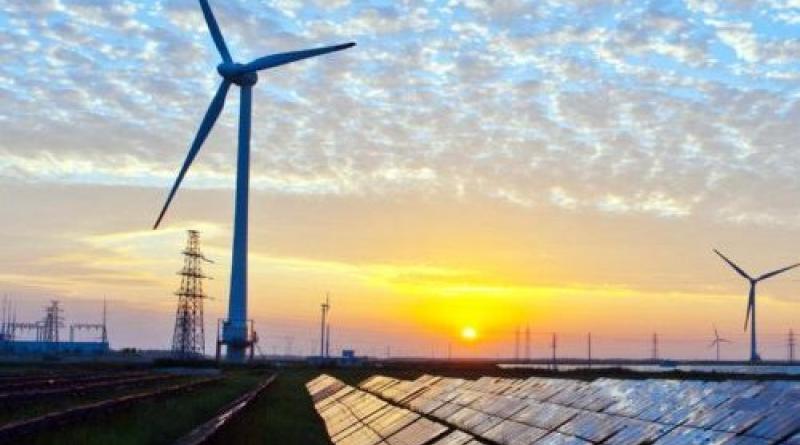U.S. Can Hit Net-Zero by 2050, Science Academy Concludes

A respected advisory group of scientists and doctors in the United States has compiled more than 80 recommendations to accelerate the “essential and possible” task of decarbonizing the entire country by 2050.
The report focuses on equity, fair benefit sharing, and support for workers and communities, on the “purely pragmatic grounds” that the shift to net-zero will require massive public and political support in the next three decades, say the authors of Accelerating Decarbonization of the U.S. Energy System, the second of two reports on the nation’s energy transition from the National Academies of Sciences, Engineering, and Medicine.
“The United States is attempting the first fair, equitable, and just technological transition in its history with a narrow portfolio of policies that relies extensively on subsidies,” the authors say. “If successful, the transition will affect almost every part of the U.S. economy and leave the country with an affordable and accessible energy system that produces zero net GHG emissions.”
“It will also afford important co-benefits, such as reduced emissions of ambient air pollutants that cause illness and death; revitalized energy, building, and industrial sectors; increased resilience to environmental and social stressors; net increases in employment; and fair, equitable, and just treatment of both displaced fossil fuel workers and low-income and historically marginalized populations.”
That effort has seen early progress as lower-cost energy technologies, legislative support, and the national focus on equity and justice “have created an opportunity for the U.S. to meet urgent needs created by the climate crisis,” write the authors. The U.S. stands to emerge as a leader in the global climate fight thanks to key legislation. In 2021 and 2022, Congress passed three ambitious funding packages—the Inflation Reduction Act (IRA), the CHIPS Act, and the Infrastructure Investment and Jobs Act—that altered the landscape of investment opportunities for clean energy technology and infrastructure. Tens of billions of dollars are being invested in new clean energy and manufacturing jobs in the U.S. and the country’s emissions trajectory, which had previously been on track for net-zero by around 2100, now stands to meet that goal by 2050.
The second report expands on the technical and federal policy blueprint provided by the first, covering a broad set of societal objectives and offering more than 80 recommendations for private and public sector action. “Nothing of this scale and with this diversity of goals has ever been attempted,” the authors write. So the report sets out to identify policy gaps and implementation barriers to ensure overall success—with environmental justice priorities at the forefront.
“The report addresses energy justice and equity, public health, the workforce, public engagement, clean electricity, the built environment, land use, transportation, industrial decarbonization, the financial sector, the future of fossil fuels, and state and local government roles,” explain the authors. Across these topic areas, key themes emerged:
• Broadening the climate policy portfolio to ensure durable support through a broad social contract that can outlive the subsidies and tax incentives in climate legislation. “Congress should create a national greenhouse gas emissions budget; an economy-wide carbon tax with provisions to protect people with low incomes; and standards on clean electricity generation and zero-emissions vehicles.”
• Ensuring equity, justice, and health to address the impacts of air pollution from fossil fuels, which have disproportionately harmed communities of colour and low-income households. “Health impacts must be assessed when technological and new infrastructure decisions are made, and steps should be taken to mitigate harms to workers and communities from the loss of fossil fuel-dependent jobs.”
• Strengthening the U.S. electricity system to ensure that the grid is properly sited, modernized, and built out. Failure on this action item would be “the single greatest technological danger to a successful energy transition.” Success will mean increasing transmission capacity, undertaking permitting reforms to expand the high-voltage interstate electricity grid, modernizing local electricity distribution systems and electricity markets, and adopting more aggressive energy efficiency measures.
• Supporting rigorous and transparent analysis and reporting for the adaptive management of climate and energy programs led by state and local governments, to ensure investments result in effective and equitable decarbonization.
• Ensuring procedural equity in infrastructure planning through collaborative processes that reach public consensus and support with the active participation of diverse groups in local communities. The report also recommends addressing barriers that prevent local communities from benefiting from renewable energy development.
• Reforming financial markets to give all communities equal access to capital for energy and climate projects.
• Building the needed workforce and capacity by helping schools develop net-zero curriculums, providing retraining for fossil fuel workers, extending unemployment insurance for fossil transition-related layoffs, and developing a workforce adjustment assistance program. The report also recommends focusing “on building the technological and social sciences workforces needed to implement decarbonization solutions.”
• Updating targets for the industrial and building sectors to be more stringent about reaching federal policy goals, with congressional action aimed at decarbonizing the industrial sector, “which could also help revive it.”
• Meeting research, development, and demonstration needs to address the full scope of the energy transition, which will expand beyond the U.S. Energy Department’s domain into sectors like agriculture and land use.
• Managing the future of the fossil fuel sector to reduce demand and execute a successful transition, even if estimates indicate a continuing role for fossil fuels in the next decade. “States should require utilities and service providers to plan for the transition, and consider moratoriums on extending gas lines to previously unserved areas,” say the authors. “Congress and state legislatures should ensure there is funding from plant owners for decommissioning and cleanup of closed facilities.”
PHOTO: Kenueone/Wikimedia Commons






